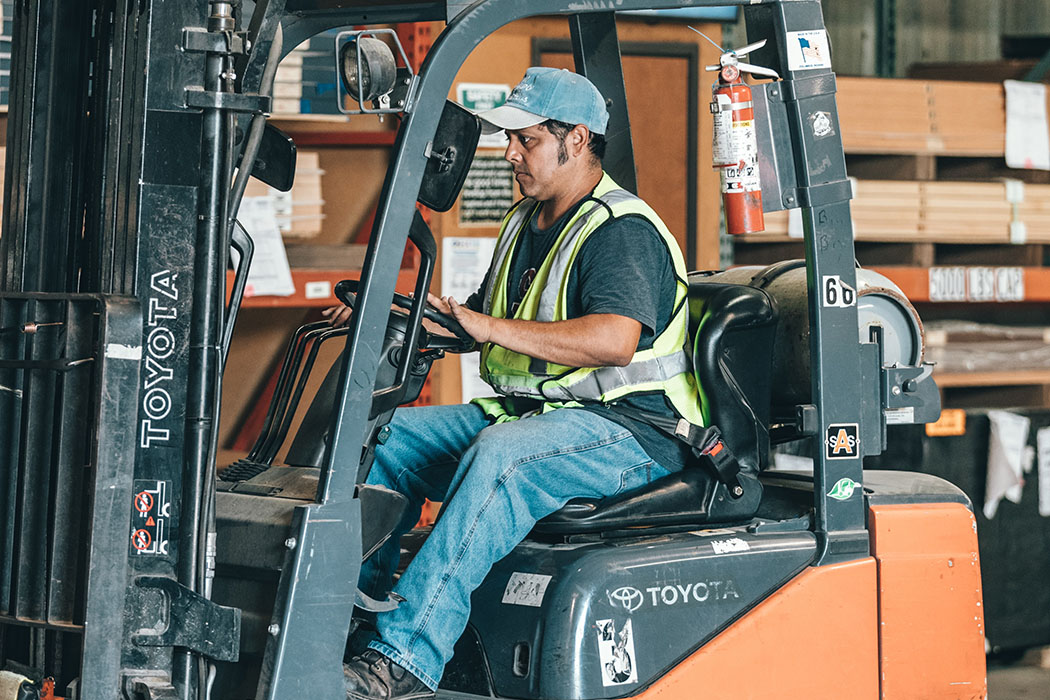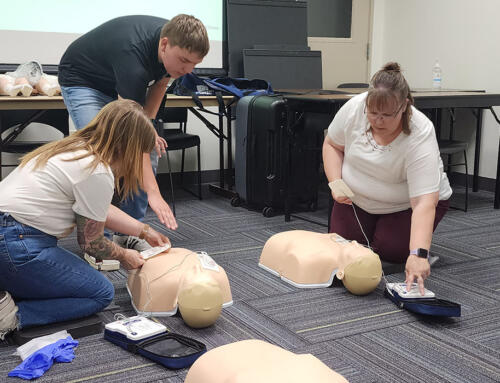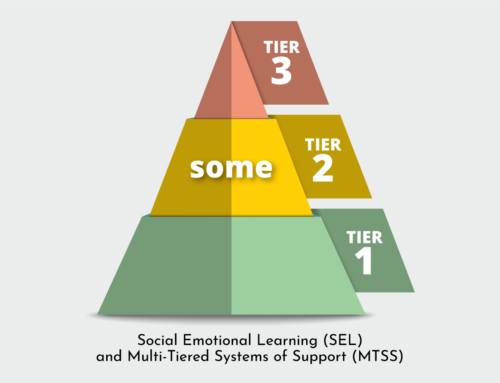Many school districts utilize forklifts in their operations. Forklifts weigh more than three tons, and can reach a speed of 10 mph. These mechanical beasts are of great assistance, yet can also be a source of great danger.
Forklift operators and other employees working around heavy equipment are at risk of hazards such as collisions, tip-overs, and struck-by conditions.
Here are safety tips to help ensure employee safety and to prevent hazards:
- Only trained and certified workers may operate a forklift. Ensure operators are trained on types of trucks in use.
- Always operate the vehicle according to the manufacturer’s instructions.
- Complete a routine check of equipment before operating and report damage or problems to the appropriate person. Remove from service any forklift found to be in unsafe operating condition.
- Always wear a seatbelt while operating a forklift as overturned forklifts are a leading cause of forklift-related accidents. Wearing a seatbelt can save operators from being crushed by a machine’s overhead guard or roll cage in the event of an accident.
- Keep loads within the forklift’s weight capacity. By exceeding the weight capacity of a forklift, employees can greatly increase the risk of tipping the machine. These load capacities can be double-checked in the equipment’s operating manual and are also listed on the machine itself.
- Operate at a safe speed, use the horn when vision is obstructed, and use caution on grades or ramps. Operators should use the horn to alert pedestrians or other forklift operators nearby to avoid an unnecessary collision. Take corners and turns slowly to minimize the risk of tipping.
- Do not raise or lower the load while traveling.
- Have clear visibility of the work area and ensure you have enough clearance when raising, loading, and operating a forklift.
- Set the parking brake, lower the forks, and set any controls to neutral when finished operating. Safely parked machines reduce the risk of unintended movement when left unattended. If a forklift is parked on an incline, employees can further secure the machine with wheel blocks.
- Repair and maintain your forklift according to the manufacturer’s recommendations.
- For propane-powered equipment, inspect the propane cylinders prior to operation. Check cylinders for rusting, dents, gouges, or worn O-rings and valves. Cylinders that show signs of wear or leaks shouldn’t be used and may need to be replaced, even if within the cylinder’s requalification date.
Regardless of the forklift energy source, it’s imperative for facility managers and forklift operators to regularly review and practice proper forklift safety. If you have questions about forklift compliance topics, contact your ESD 112 Loss Control Specialist.





 ESD 112 equalizes educational opportunities for learning communities through innovative partnerships, responsive leadership, and exceptional programs.
ESD 112 equalizes educational opportunities for learning communities through innovative partnerships, responsive leadership, and exceptional programs.